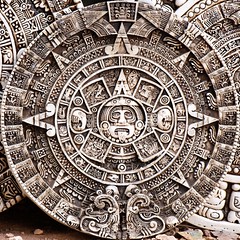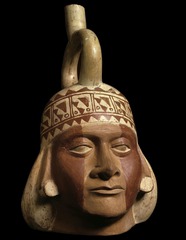| 11761181079 | Ancestral Pueblo | Formerly known as the Anasazi, this people established a mixed agricultural and gathering/hunting society in the southwestern part of North America. |  | 0 |
| 11761188270 | Apedemek | The lion god of classical Meroe; his popularity shows a turn away from Egyptian cultural influence. |  | 1 |
| 11761192438 | Axum | The Christian state in Africa that developed its own branch of Christianity, Coptic Christianity, because it was cut off from other Christians due to a large Muslim presence in Africa. |  | 2 |
| 11761209232 | Bantu expansion | Gradual migration of peoples from their homeland in what is now southern Nigeria and the Cameroons into most of eastern and southern Africa, a process that began around 3000 B.C.E. and continued for several millennia. The agricultural techniques and ironworking technology of thesefarmers gave them an advantage over the gathering and hunting peoples they encountered. |  | 3 |
| 11761224594 | Batwa | A pygmy people who were the oldest recorded inhabitants of the Great Lakes region of central Africa. |  | 4 |
| 11761236979 | Cahokia | an ancient settlement of southern Indians, located near present day St. Louis, it served as a trading center for 40,000 at its peak in A.D. 1200. |  | 5 |
| 11761242339 | Chaco Phenomenon | Name given to a major process of settlement and societal organization that occurred in the period 860-1130 C.E. among the peoples of Chaco canyon, in what is now northwestern New Mexico; the society formed is notable for its settlement in large pueblos and for the building of hundreds of miles of roads (the purpose of which is not known). |  | 6 |
| 11761250558 | Chavin | the first major South American civilization, which flourished in the highlands of what is now Peru from about 900 to 200 B.C. |  | 7 |
| 11761264102 | Coptic Christianity | The Egyptian variety of Christianity, distinctive in its belief that Christ has only a single, divine nature. |  | 8 |
| 11761271399 | Hopewell Culture | Named from its most important site (in present-day Ohio), this is the most elaborate and widespread of the North American mound building cultures; flourished from 200 B.C.E. to 400 C.E. |  | 9 |
| 11761277406 | Jenne-Jeno | One of the first urbanized centers in western Africa. A walled community home to approximately 50,000 people at its height. Evidence suggests domestication of agriculture and trade with nearby regions. | 10 | |
| 11761279659 | Maya | Mesoamerican civilization concentrated in Mexico's Yucatan Peninsula and in Guatemala and Honduras but never unified into a single empire. Major contributions were in mathematics, astronomy, and development of the calendar. |  | 11 |
| 11761285199 | Meroe | center of the kush dynasty from about 250 B.C. to A.D. 150; known for its manufacture of iron weapons and tools. |  | 12 |
| 11761289047 | Moche Civilization | (Also known as the Mochica) flourished along the northern coast and valleys of ancient Peru, in particular, in the Chicama and Trujilo, Valleys, between 1 CE and 800 CE |  | 13 |
| 11761313603 | Mound Builders | native american civilizations of the eastern region of north america that created distinctive earthen works that served as elaborate burial places |  | 14 |
| 11761318116 | Nazca | South American civilization famous for its massive aerial-viewable formations |  | 15 |
| 11761324731 | Niger Valley Civilization | Distinctive city-based civilization that flourished from about 300 B.C.E. to about 900 C.E. in the floodplain of the middle Niger and that included major cities like Jenne-jeno; the Niger Valley civilization is particularly noteworthy for its apparent lack of centralized state structures, having been organized instead in clusters of economically specialized settlements. |  | 16 |
| 11761331796 | pueblo | a communal village built by Indians in the southwestern United States |  | 17 |
| 11761338259 | Semi-sedentary | Term frequently used to describe the peoples of the eastern woodlands of the United States, Central America, the Amazon basin, and the Caribbean islands who combined partial reliance on agriculture with gathering and hunting. |  | 18 |
| 11761344940 | Teotihuacan | first major metropolis in Mesoamerica, collapsed around 800 CE. It is most remembered for the gigantic "pyramid of the sun". |  | 19 |
| 11761352447 | Tikal | the most important Maya political center between the 4th-9th centuries. It was a city that had temples, pyramids, palaces, and public buildings. | 20 |
CH#6 Vocab AP World History Flashcards
Primary tabs
Need Help?
We hope your visit has been a productive one. If you're having any problems, or would like to give some feedback, we'd love to hear from you.
For general help, questions, and suggestions, try our dedicated support forums.
If you need to contact the Course-Notes.Org web experience team, please use our contact form.
Need Notes?
While we strive to provide the most comprehensive notes for as many high school textbooks as possible, there are certainly going to be some that we miss. Drop us a note and let us know which textbooks you need. Be sure to include which edition of the textbook you are using! If we see enough demand, we'll do whatever we can to get those notes up on the site for you!

